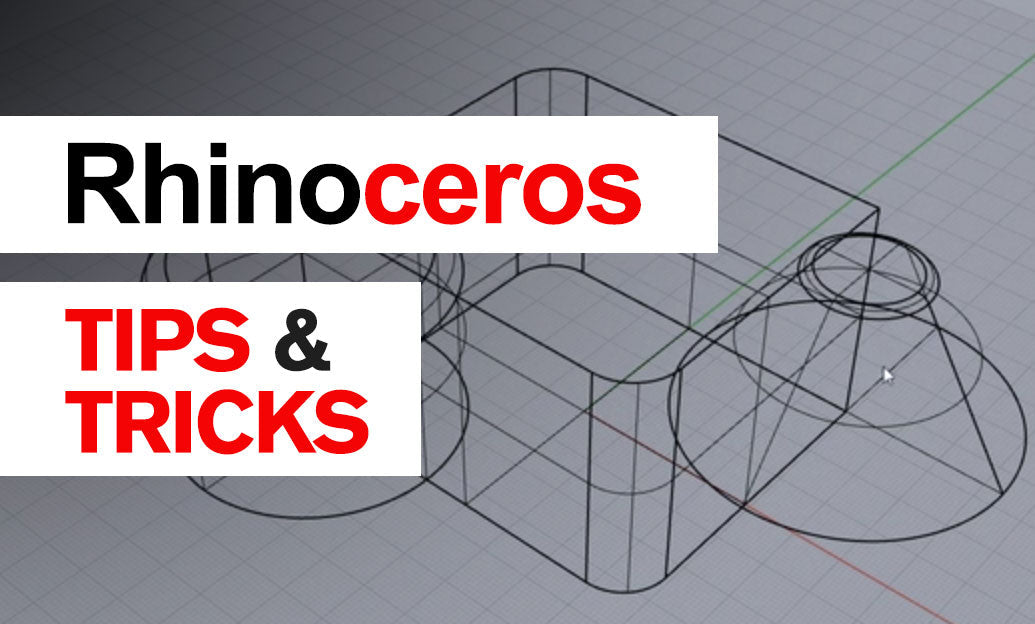Your Cart is Empty
Customer Testimonials
-
"Great customer service. The folks at Novedge were super helpful in navigating a somewhat complicated order including software upgrades and serial numbers in various stages of inactivity. They were friendly and helpful throughout the process.."
Ruben Ruckmark
"Quick & very helpful. We have been using Novedge for years and are very happy with their quick service when we need to make a purchase and excellent support resolving any issues."
Will Woodson
"Scott is the best. He reminds me about subscriptions dates, guides me in the correct direction for updates. He always responds promptly to me. He is literally the reason I continue to work with Novedge and will do so in the future."
Edward Mchugh
"Calvin Lok is “the man”. After my purchase of Sketchup 2021, he called me and provided step-by-step instructions to ease me through difficulties I was having with the setup of my new software."
Mike Borzage
Design Software History: The Evolution and Impact of Ray Tracing in Design Software History
December 13, 2024 5 min read


Introduction to Ray Tracing
Ray tracing is a rendering technique that simulates the way light interacts with objects to create highly realistic images. By tracing the path of light rays as they bounce off surfaces, it calculates color, shadows, reflections, and refractions with remarkable accuracy. This method stands at the core of producing photorealistic graphics, capturing the nuances of light and material properties that define how we perceive the world.
In the early days of computer graphics, visual representations were rudimentary, limited by computational constraints and simplistic algorithms. Images were often flat, lacking depth and realism, which hindered their effectiveness in applications where visual fidelity was crucial. As technology progressed, there was a growing need for more realistic visualization, particularly in fields like engineering, architecture, and entertainment, where accurate depictions of light and materials could significantly enhance the quality and utility of digital models.
One of the pivotal figures in the development of ray tracing is Turner Whitted. In 1980, Whitted published a seminal paper titled "An Improved Illumination Model for Shaded Display," which introduced the concept of recursive ray tracing. His work laid the foundation for simulating reflections and refractions in computer graphics, enabling the creation of images with unprecedented realism. Whitted's contributions sparked a transformative shift in the industry, inspiring researchers and practitioners to explore and expand upon his techniques, ultimately leading to the sophisticated ray tracing methods used today.
The Development of Ray Tracing Technologies
Since its inception in the 1980s, ray tracing algorithms have undergone significant evolution, driven by advancements in computational power and algorithmic optimization. Initially, ray tracing was computationally intensive, limiting its practical application to static images and requiring long rendering times. Over the decades, researchers developed various acceleration structures, such as bounding volume hierarchies and kd-trees, to optimize the traversal of rays through complex scenes. These innovations, coupled with parallel computing and GPU advancements, have dramatically improved the efficiency of ray tracing, making it increasingly viable for real-time applications.
Traditional rasterization techniques, which have been the mainstay in real-time graphics, render images by projecting 3D objects onto a 2D screen, handling visibility and shading based on the geometry of objects. While rasterization is fast and well-suited for interactive applications like video games, it struggles to accurately depict complex lighting effects such as soft shadows, reflections, and global illumination. Ray tracing, on the other hand, naturally simulates these effects by following the physical paths of light.
Here is a comparison between the two techniques:
- Rasterization: Fast rendering speeds, suitable for real-time applications, but less accurate with complex lighting.
- Ray Tracing: Highly realistic lighting and shading, more accurate reflections and refractions, but traditionally slower rendering times.
Notable software and tools have embraced ray tracing to produce high-quality visuals. Pixar's RenderMan, for instance, has been instrumental in creating the stunning visuals seen in many animated films, leveraging ray tracing to achieve photorealistic effects. Blender, the open-source 3D creation suite, incorporates a ray tracing engine called Cycles, enabling artists and designers to achieve realistic rendering without proprietary software. Other tools, such as Autodesk's Arnold and Chaos Group's V-Ray, have also been pivotal in the widespread adoption of ray tracing across industries, offering powerful rendering capabilities for visual effects, architectural visualization, and product design.
Ray Tracing in Product Visualization
In product design and manufacturing, realism is paramount. The ability to visualize a product accurately before it enters production can significantly impact design decisions, cost efficiency, and time-to-market. Ray tracing plays a critical role in this process by providing photorealistic renderings that capture the intricate details of materials, textures, and lighting conditions. Such high-fidelity images allow designers to evaluate the aesthetic and functional aspects of products more effectively, leading to better-informed decisions and higher-quality outcomes.
The role of ray tracing extends beyond the design phase into digital marketing and e-commerce. In an increasingly digital marketplace, consumers rely heavily on online visuals to make purchasing decisions. Photorealistic imagery generated through ray tracing enhances the user experience by providing accurate and enticing representations of products. This level of detail helps build trust with potential customers, as they can see exactly what they are buying, reducing the uncertainty that often accompanies online shopping. Moreover, interactive 3D models and configurators powered by ray tracing enable users to explore products from every angle and customize features to their preference, further engaging them in the purchasing process.
Ray tracing contributes to creating compelling visual content that distinguishes brands in a crowded market. By showcasing products with lifelike lighting and shadowing, companies can highlight the quality and craftsmanship of their offerings. The ability to simulate various environments and lighting conditions also allows for versatile marketing materials, catering to different contexts and audiences. This realism not only improves the aesthetic appeal but also communicates a level of professionalism and attention to detail that can influence consumer perception positively.
Future of Ray Tracing in Design Software
The advent of real-time ray tracing marks a significant milestone in the evolution of graphics technology. In gaming and simulation, real-time ray tracing has begun to revolutionize visual fidelity, allowing for dynamic lighting, reflections, and shadows that respond instantly to changes within a scene. This advancement enhances immersion and realism, providing experiences that were previously unattainable with traditional rendering techniques. The impact is not limited to entertainment; simulations in fields such as training, architecture, and virtual prototyping benefit from the heightened realism, leading to more accurate and valuable outcomes.
The accessibility of ray tracing has been propelled by next-generation GPUs, notably NVIDIA's RTX technology. These GPUs are specifically designed to handle the computational demands of real-time ray tracing by incorporating dedicated hardware, such as RT Cores, that accelerate ray tracing operations. This innovation has made it feasible for professionals and consumers alike to leverage ray tracing in real-time applications, bridging the gap between high-quality rendering and interactive performance. Other manufacturers, like AMD with their Radeon RX series, have also introduced hardware supporting ray tracing, contributing to a broader adoption across the industry.
Looking ahead, the integration of ray tracing is expected to deepen across various design fields. Emerging applications in AI and VR stand to benefit significantly. For instance:
- Artificial Intelligence (AI): Enhancing rendering processes through optimization and intelligent sampling, leading to faster and higher-quality results.
- Virtual Reality (VR): Creating more immersive environments with photorealistic lighting and materials, improving the user experience.
The convergence of these technologies suggests a future where immersive and realistic design experiences become the norm, pushing the boundaries of creativity and innovation.
Conclusion
Ray tracing has undeniably transformed product visualization and design processes by introducing a level of realism that was once unattainable. Its ability to accurately simulate the behavior of light has elevated the quality of digital imagery, enabling designers, engineers, and marketers to create visuals that faithfully represent real-world materials and environments. This advancement has not only improved the aesthetic appeal of digital products but has also enhanced the functionality and effectiveness of design workflows.
The future potential of ray tracing is vast, especially as it continues to integrate with emerging technologies. The fusion of real-time ray tracing with AI and VR technologies promises to deliver even more immersive and realistic design experiences. Designers will be able to interact with their creations in environments that closely mimic reality, facilitating a deeper understanding of how products will perform and be perceived in the physical world. These advancements will likely lead to innovations in design practices, fostering creativity and pushing the limits of what is possible.
It is an opportune time for designers to explore and adopt ray tracing technologies in their workflows. The increased accessibility due to advancements in hardware and software means that the barriers to entry are lower than ever. By embracing these tools, professionals can enhance their creativity, improve the quality of their work, and stay competitive in an industry that is rapidly evolving. The move towards more photorealistic and interactive design experiences is not just a trend but a significant shift in how we approach design, visualization, and communication in the digital age.
Also in Design News

Rhino 3D Tip: Consistent Annotation Scaling Across Mixed‑Scale Rhino Layouts
December 10, 2025 2 min read
Read More
Cinema 4D Tip: Fast Look Development Using Cinema 4D’s OpenGL Viewport
December 10, 2025 2 min read
Read More
ZBrush Tip: ZBrush Layers: Non-Destructive Workflow and Best Practices
December 10, 2025 2 min read
Read MoreSubscribe
Sign up to get the latest on sales, new releases and more …


